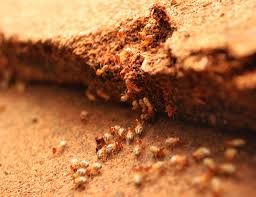Termite Control Using Borax for Dummies
After a termite inspection has been carried out, pest control specialists can recommend a best plan of action to remove present termites and prevent future infestation. Usually, some form of chemical treatment will probably be recommended. Termites remedies incorporate temporary chemical programs, baits, traps in addition to structural and physical obstacles.
Oftentimes, this will be all it takes to eradicate an whole colony of termites. If you start with termite baiting, you may be in danger of infestation. Termites may have a network of tunnels they travel through to reach a nest up to 100 metres in their food sources.
Ultimately the extent of the management technique and your problem required to solve the purchase price you pay will be impacted by it.
The Best Strategy To Use For Termite Control Using Neem Tree
Treatment using a spray, dust or foam may cost between $3 30 and $6 60 based on the extent of the harm.
Soil treatment is the longest lasting way to keep termites away from your house. This may cost between $2 500 and $3 500, but won't need to be repeated.
Expect to cover the area of $2 50 to get a pest control, and $300-$600 for a building and pest inspection.
The Facts About Termite Control Using Neem Tree Uncovered
Be sure to assess what they include within their service before you hire a pest management specialist.
Be as thorough as you can in describing the type or types of pests you have and the extent of the problem. If there are access difficulties, mention these. This way you'll receive more accurate quotes. In case youre hiring a termite control service guarantee their treatment program is compliant with Australian Standard AS 36 60.
Most services will offer a money-back guarantee. Check your pest control service is licensed and qualified to work in your home. .

The smart Trick of Termite Control Use That Nobody is Talking About
Termites serve an ecologicalfunction by converting trees into matter and consume cellulose and timber in bush land. Unfortunately in the urban surroundings, thewood in buildings and other structures like wooden electricity poles and bridges is equallyappealing to termites and considerable damage can be caused by infestation.

Direction of termites, and eradication of exotic species isalso expensive a campaign to eliminate West Indian dry wood termite Cryptotermes brevis (Walker)in Queensland is estimated to have cost $4.2 million by 199 8 (Peters and Fitzgerald, 199 8).Worldwide, harm brought on by termites is projected at U.S $2 2 billion per annum in terms of Urban cities & termite attack Environment 2 5 3Â damage to wooden structures (Fage et al., 198 8). .
Prevention and treatment of termite damage in Australian cities is therefore needed, and may give rise to unwanted side effects. Until 199 5, organochlorine termiticide treatments were used to create find this barriers. These have since been replaced with physicalbarriers and other, less stubborn, chemicals. As a consequence, chemical termiticides need to be reapplied on a regular basis, averagingevery 3 to 5 years depending on local requirements.
Not known Factual Statements About Termite Control Using Neem Tree
In 200 use this link 5, bifenthrin (FMC Australasia Pty Ltd) is the most widely used termiticide in Australia followed by imidacloprid and fipronil. Chlorpyrifos (Dow Agricultural Products) has decreased in usage due to concerns over efficacy and toxicity in alkaline soils. Permethrin, alpha-cypermethrin aren't now used although they stay enrolled for use in Australia by the National Registration Authority (NRA). .
Australias termite fauna is diverse, represented by five families (Mastotermitidae, Termopsidae,Kalotermitidae, Rhinotermitidae and Termitidae) comprising 40 known genera and more than 26 6described species. Termites play an integral role in the nutrient cycles of tropical ecosystems (Whitford,199 1). Termites might be grouped as underground , dry wood or damp wood, try these out based theirhabits.
